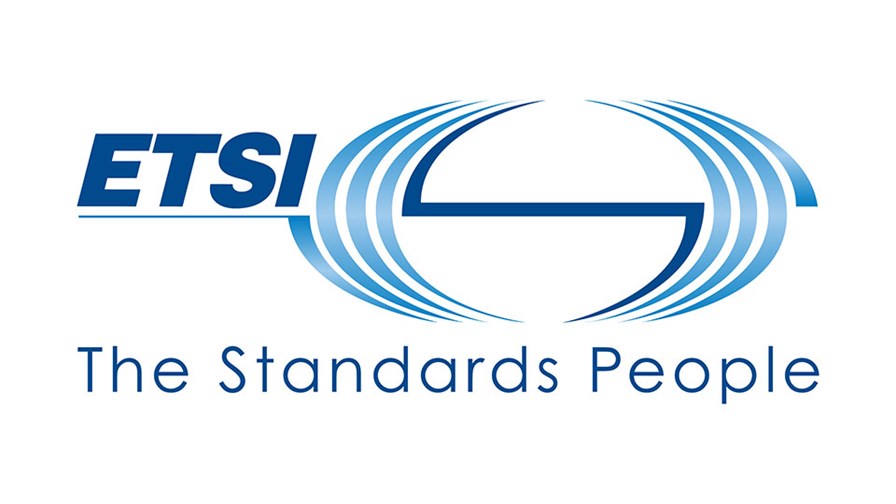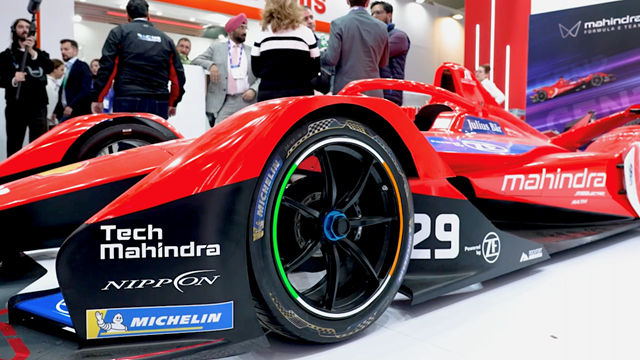
- ETSI gets stuck into slicing
- Musk’s new logo steps on Meta’s toes
- Verizon gets a wireless service bump
In today’s industry news roundup: ETSI launches OpenSlice software development group; Musk’s new logo might soon be an ex; Verizon’s mobile service revenues get a lift in the second quarter but device sales drag down its top line; and more!
Earlier this year, ETSI, the European industry body well known for its industry specifications groups (ISGs), announced plans to form software development groups (SDGs) in an effort to “adapt to the ever-evolving landscape of technology and standards development.” Well, now its first SDG is here and it’s called OpenSlice. “With this group, ETSI positions itself as a focal point for development and experimentation with network slicing,” noted the industry body in this announcement. “OpenSlice is creating an open-source, service-based operations support system (OSS) to deliver network slice-as-a-service (NSaaS) in alignment with specifications from leading standards development organisations, including 3GPP, TM Forum, and GSMA,” it added. The SDG will leverage existing work, as OpenSlice will be developed using ETSI zero-touch service and network management (ETSI ZSM) principles, implementing the ETSI network functions virtualisation (NFV) data model and APIs. "ETSI SDG OpenSlice will revolutionise the way network slicing is delivered," according to Dr. Christos Tranoris of the University of Patras, and convenor of ETSI SDG OpenSlice. “We are excited about the impact this collaborative effort will have on the telecommunications landscape, advancing the adoption of NSaaS, [and] ensuring the interoperability and seamless integration of network slicing technologies.” First, though, we’ll need to figure out how to pronounce NSaaS…
“One must have a heart of stone to read it without laughing.” That’s what Oscar Wilde said after reading the “apotheosis of Victorian sentimentality” that was Charles Dickens’ wilfully over-the-top description of the death of the character Little Nell in his novel The Old Curiosity Shop. The same applies to the news that after all the ballyhoo and bugle oil spilt about Elon Musk killing off the little blue bird of happiness that was the Twitter logo and replacing it with an X, it turns out that arch rival Meta already holds the rights to the trademark of that particular capital letter of the alphabet. As the invaluable New York City-based website Business Insider reports, Facebook, as it was then, long ago registered X as a logo relating to its use for “online social networking services” and “social networking services in the fields of entertainment, gaming, and application development.” The new logo for whatever Twitter is now supposed to be called bears an uncanny resemblance to a generic Unicode character and a Monotype font. The Unicode Standard is an information technology and computing standard for the consistent encoding, representation, and handling of text expressed in most of the world’s writing systems. Every character is given a specific numerical value that can be used across platforms. Monotype Fonts is an on-demand cloud-based font subscription service that “streamlines font discovery, usage, licensing, and deployment” whereby “all users are free to create mockups, pitches, and prototypes” and “are allowed to access and use any typeface from the library for non-commercial use.” It seems Twitter’s new incarnation as X closely resembles a generic Unicode character known as “mathematical double-struck capital X that was added to the Unicode in March 2001.” The US Patent and Trademark Office permits the registration and trademarking of logos provided they are unique and distinctive, which Twitter’s blue bird silhouette is/was. There are some differences between Meta’s X logo and the X Musk is now using to identify what, until yesterday, was Twitter, but Meta’s lawyers will be all over Musk like a bad rash if he decides to use it to identify for social networking purposes, which is apparently what it is supposed to do. Trademarks are protected in law and actually gain value the longer they are in use and circulation, so Musk’s new logo, as a newcomer to the scene, is wide open to legal challenges over its usage in ways that its abandoned blue bird logo isn’t. Josh Gerben, a trademark lawyer and founding partner at the Washington DC-based law practice Gerben IP, has overseen the registration of more than 7,500 trademarks for clients in the US and in more than 30 other countries worldwide. In 2021, he filed the most trademark applications for US-based clients with the US Patent and Trademark Office. He told Business Insider, “My first thought is how much value is probably tied into the Twitter brand, and the bird logo, that has been cast aside. It's exceptionally rare that any brand becomes so pervasive in culture and quite frankly, around the world, as Twitter has become.” There’s a lot wrong with Twitter, but its logo wasn’t one of them.
It was a mixed bag for Verizon in the second quarter as the giant US operator reported a 3.5% year-on-year decline in total revenues to $32.6bn. This was due primarily, it said, to “reduced wireless equipment revenue and lower postpaid phone upgrade activity”, while its mobile services revenues increased by 3.8% to $19.1bn “driven primarily by pricing actions implemented in recent quarters, the larger allocation of administrative and telco recovery fees from other revenue into wireless service revenue, and a growing contribution from fixed wireless offerings.” Read more.
Ethernet is a venerable data networking standard that just keeps on giving. It was created half a century ago by Robert Metcalfe and his team of scientists at the Xerox lab in Palo Alto, California, where they were researching wired technologies able to connect multiple computers over long distances. Ethernet was introduced as a commercial product in 1980, was first standardised in 1983, and is now ubiquitous in data networks of all types and sizes. Ethernet is particularly valuable because it can be adjusted to support higher bit rates, more nodes and longer distances whilst (and this is important) retaining considerable backward compatibility, meaning that extant networks can keep working, thus saving costs and disruption. There are already several industry bodies representing the interests of manufacturers, vendors and end users including the MEF (which was established back in 2001) the Ethernet Alliance and the Ethernet Technology Consortium. Now, with the emergence and spread of artificial intelligence (AI) apps and services, another partnership organisation has been formed: The Ultra Ethernet Consortium (or UEC which, when spoken aloud, sounds a bit like a cat sicking a furball). The UEC’s lead members are Arista, Cisco, HPE and Intel and, with the support of the Linux Foundation, its aim is to increase the scale, speed, stability, and reliability of Ethernet networks to satisfy AI’s high-performance networking requirements. This means going well beyond Ethernet’s existing capabilities to provide a high-performance distributed and lossless transport layer optimised for the AI workloads that will place massive performance and capacity demands on networks. Other members of the new consortium working on the development of the physical, link, transport and software layers are AMD, Broadcom, Eviden, Meta and Microsoft. A detailed positioning paper, Overview of and Motivation for the Forthcoming Ultra Ethernet Consortium Specification, makes it plain that AI workloads – such as large language models (LLM), deep learning recommendations (DLRM) and deep and hierarchical ensemble network (DHEN) – comprise data and compute components that are are so intense they have to be distributed across thousands of processors that share ‘parameters’ with other processors, which are also involved in the processes and computing. With such intense data flows, any bottleneck can quickly congest a network to the point that the performance of an AI app degrades to practical uselessness. Hitherto, the only way to interconnect processor and memory was via remote direct memory access (RDMA) and that is not optimal for AI workloads. Hence the UEC’s goal of developing a transport protocol that will support RDMA and Ethernet/IP while “addressing AI network scale for applications, endpoints and processes, and maintaining the goal of open standards and multi-vendor interoperability.” Dr J Metz, chair of the UEC, says, “This isn’t about overhauling Ethernet. It’s about tuning Ethernet to improve efficiency for workloads with specific performance requirements. We’re looking at every layer – from the physical all the way through the software layers – to find the best way to improve efficiency and performance at scale.” It is evident that something needs to be done whilst AI is in its infancy. A new report from research house the Dell’Oro Group has found that, by 2027, 20% of Ethernet datacentre switch ports will be connected to fast servers able to support AI workloads. The datacentre switch market is as important as it is solid, but the growth in generative AI applications will make it even more so, and is forecast to be worth US$100bn in sales by 2028.
Middle East telco Ooredoo is in talks with peer Zain and UAE-based TASC Towers Holding to combine their tower assets in Qatar, Kuwait, Algeria, Tunisia, Iraq and Jordan – about 30,000 in total – into a joint venture. The company, which will be the biggest towers company in the region if formed, would “operate as an independent and standalone entity providing passive infrastructure-as-a-service throughout the region with a focus on operational efficiencies, synergies and reduction of carbon footprint.” Ooredoo and Zain would retain their respective active infrastructure at each site, so this is purely a passive and not an active infrastructure sharing deal. The partners expect to form the venture at some point during the third quarter. Read more.
- The staff, TelecomTV




